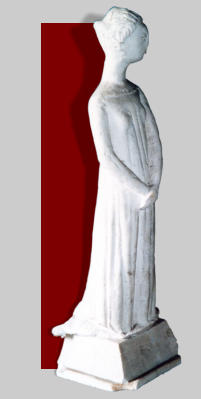
Realizzazione grafica by Luciano Curtarello© - Tutti i diritti riservati - ©Nino Galizzi - Rev. Aprile 2023|Mod. 001

NINO GALIZZI

SCULPTOR







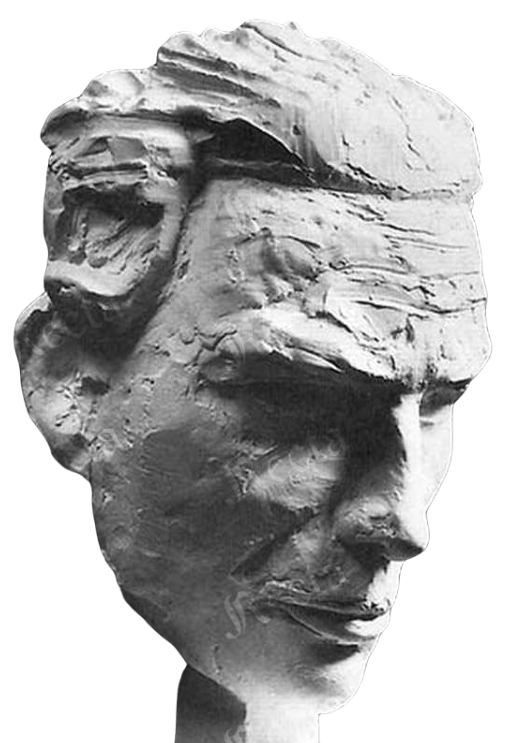

Self-portrait | 1945
Plaster, h cm 30
Carrara Academy of Bergamo
Biography
Three Berzi sisters
Giuseppina Berzi
Plaster, h cm 60
Nino Galizzi was born in Bergamo on March 12, 1891.
He
completed
his
first
studies
at
the
Andrea
Fantoni
School
of
Applied Art and at the Carrara Academy in Bergamo.
He
served
in
the
military
for
almost
six
years
during
the
period
of
the
First
World
War
(1915-1918).
He
fought
on
all
fronts,
in
Macedonia,
Serbia
and
Greece,
earning
promotions
and
decorations for valour.
After
the
military
parenthesis
he
resumed
his
studies
and
work
in Rome, Florence and Paris.
In
1921
he
married
Teresa
Giandomenici,
a
teacher
of
painting,
with whom he had three children, Paolo, Silvia and Bianca.
He lived and worked alternately in Milan, Rome and Bergamo.
He
participated
in
countless
and
important
national
exhibitions
such
as
the
Venice
Biennale,
the
Quadriennale
in
Rome,
the
Permanente in Milan.
He held various solo exhibitions both in Italy and abroad.
For
some
time
he
taught
plastic
art
at
the
Accademia
Carrara
in
Bergamo.
He
took
part
in
the
organization
of
competitions
and
prizes
by
being
part
of
several
Juries.
There
were
also
many
collaborations with newspapers and magazines.
Nino Galizzi died in Bergamo on September 20, 1975.
Many
of
his
works
can
be
found
in
important
private
collections
and in public buildings in Bergamo, Milan and Rome.
Essential
• G. Nicodemi,
Lo scultore Nino Galizzi
,
Clusone 1933, Giudici Graphic Arts
• G. Visentini,
Nino Galizzi sculptures,
Bergamo 1933, Edizioni Cronache
• Nicodemi - Visentini - Galmozzi - Borgese,
Four studies on the sculpture of Nino Galizzi,
Milan 1945, Officine grafiche Esperia
• B. Belotti,
History of Bergamo and its people,
Bergamo 1959, Poligrafiche Bolis
• M.N. Varga,
Nino Galizzi - Fragments,
Milano 1960, Esperia
• G. Visentini - R. Birolli - A. Pica,
7 sculptures by Nino Galizzi
at Palazzo Strozzi in Florence,
Bergamo 1967, Industrie Grafiche Cattaneo
• C.L. Ragghianti,
Nino Galizzi - sculptures,
Cinisello Balsamo 1972, Amilcare Pizzi Editore
• G. Anzani,
Nino Galizzi the sculptor:
between secession and classicism.
Posthumous exhibition catalogue,
Torre Boldone 1988, Edizioni Grafital
• M. Cattaneo,
Immaginario plastico - anni 1900/1945
,
Libri Aparte editore
• B. Mazzoleni,
Nino Galizzi, itinerary of his works in the
city of Bergamo
Grafica e Arte - Bergamo

bibliography

Extracts
"...
In
the
history
of
Italian
sculpture
of
our
century,
undoubtedly
this
inadequately
known
and
valued
artist
has
his
own
safe
and
indisputable
place,
for
originality
and
expressive breadth ..."
CARLO L. RAGGHIANTI
Critica d'Arte, Vallecchi Editori -
N.112, Firenze 1968
"...
A
figure
of
not
underestimated
interest,
for
originality
and
expressive
richness,
singularly
autonomous
even
where
cultural
calls
appear
more
urgent and manifest ..."
GIOVANNI ANZANI
Exhibition Catalogue Posthumously,
Bergamo 1988
Portrait
by Mariuccia Stucchi
Bronze, h cm 60
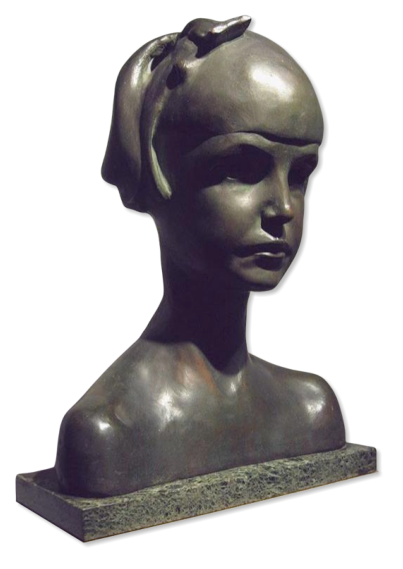

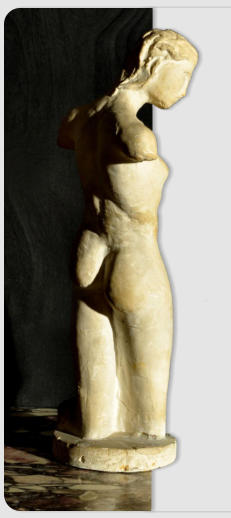
Nude
Plaster, h cm 45
"...
Animous,
statuary
when
required
of
him,
Nino
Galizzi,
in
the
confines
of
his
studio,
seems
to
shy
away
from
total
commitment
and
constantly
chooses
the
refined
elegance
of
the
fragment.
The
private
world
of
this
sculptor
and
therefore
his
most
authentic
world,
is
a
gallery of fragments... of small headless or mutilated statues..."
AGNOLDOMENICO PICA
Nino Galizzi at the exhibition of Modern Art in Italy 1915-35,
Palazzo Strozzi, Florence 1967
"...
He
speaks
little
but,
on
the
other
hand,
he
transfers
to
sculpture
his
particular
dialectical
rhythm,
composed
of
delicate
plastic
accents,
suffused
with
reversible
mystical
and
sensual
textures
that
give
his
works
the
precious
nourishment
of
an
experience
carried
out
for
the
exclusively
personal purposes of research ..."
MIKLOS N. VARGA
Nino Galizzi "Frammenti", Milano 1960, Esperia
"...
The
disagreement
that
makes
these
works
alive
and
attractive
is
therefore,
summing
up,
between
the illustrative and the decorative element.
Between
mask
and
character.
Between
symbol
and
reality.
Between
acts
of
the
limbs
and
expression
of
the
faces.
Between
rigidity
and
softness,
between
a
scratch
and
a
caress.
Between
lasciviousness
and
chastity.
Between
the
decadent
and the primitive element...
There
is
a
taste
of
fragmentary...
of
the
line,
of
the
arabesque,
of
the
rhythm,
but
at
the
same
time
there
is
the
illustrative,
almost
literary
taste
of
that
particular
and
retractable
human
fellow,
of
that
particular
child,
of
that
woman's
breast
or
of
that
man's back ..."
LEONARDO BORGESE
Four studies on sculpture of Nino Galizzi, 1945
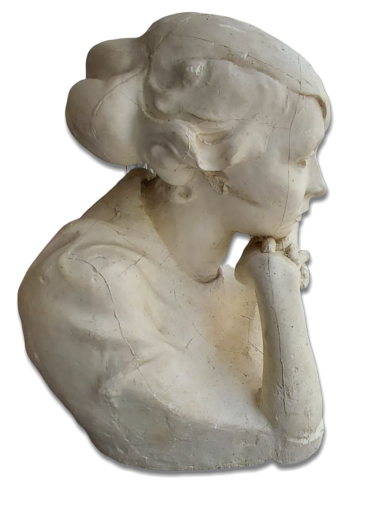

They write
about him
Nino
Galizzi
is
an
artist
of
considerable
interest
in
the
field
of
Italian
sculpture
of
the
1900’s,
who
deserves
to
be
rediscovered
and
enhanced
with
a
publication
like
this
and,
ideally,
with
a
retrospective
in
which
to
explore
more
deeply
his
creative
path,
ranging
from the 1910’s to his death in 1975.
Along
this
wide
period
of
time,
Galizzi
developed
a
style
that
combines
different
sources
of
inspiration
-
from
Wildt
and
the
Secession
to
the
beginnings,
to
the
influences
of
the
twentieth
century,
to
the
constant
reference
of
classical
statuary
-
managing
to
find
a
completely
personal
synthesis,
an
autonomous
language
in
balance
between
plastic
sense and lyricism.
While
some
works
of
public
commission
are
characterized
by
a
return
to
order
and
a
solidity
of
twentieth-century
ancestry,
in
the
vast
production
of
sculptures
dedicated
to
the
human
figure
and,
in
particular,
to
female
nudes,
Galizzi's
most
intimate
and
personal
stylistic
code
emerges,
which
translates
itself
into
sinuous
bodies
evocative
of
classical
sculpture, sometimes in the form of fragments, lyrically indefinite and suspended in time.
During
his
career,
Galizzi
has
exhibited
on
numerous
occasions
at
the
Permanente,
starting
from
the
beginning
of
his
artistic
career,
before
obtaining
some
public
recognition
and
participating
in
the
Venice
Biennale
and
the
Rome
Quadrennial,
up
to
the
mature phase in the sixties.
Galizzi
was
a
member
of
the
Permanente
for
several
years,
when
the
institution
represented
an
essential
point
of
reference
for
contemporary
art
in
Milan:
the
numerous
social
exhibitions
and
other
exhibitions
in
which
he
participated
at
our
museum
have
contributed significantly to the development of his career.
This
very
short
text
wants
to
testify
the
historical
link
between
the
sculptor
and
the
Permanente,
with
the
hope
that
this
volume
can
represent
a
first
step
towards
the
rediscovery
of
an
artist
who
is
certainly
worth
knowing
in
greater
detail,
justly
enhancing
his contribution to the Italian sculpture of the twentieth century.
LUCA CAVALLINI
Curator Museum of the Permanente
"...To
the
initial
secessionist
hints,
also
derived
from
the
lesson
of
Wildt,
precisely
in
that
insistent
research
on
the
line
.......and
which
finds
its
maximum
expression
in
the
group
of
The
Baptism
of
Christ
of
1920-21,
partly
lost,
Galizzi
stages
his
highly
personal
classicism
that
feeds
on
cultured
references,
far,
in
my
opinion,
from
the
Rodinian,
if
not
for
some
youthful
iconographic
contaminations...
...
In
the
portrait
of
Maria
Cortesi
of
1921/24,
the
female
face
with
an
absent
gaze,
is
enclosed
in
a
bust-
crater,
transposing
the
daily-bourgeois
connotations
into
a
dimension
of
timelessness,
in
short,
there
is
a
mixture
of
ancient
and
extremely
contemporary
details,
such
as
the
hat
and
that
sort
of
stole
that
marks
the
contour
of
the
shoulders,
while
the
bodice
deliberately
becomes
a
pretext
to
recall,
with
the
repeated
insistence
of
the
slender
folds,
the
robes
of
ancient
Greek
statues.
Galizzi,
therefore,
is
more
interested
in
returning
the
idea
of
the
subject
than
a
precise
portrait
of
him,
conceiving
it
as
a
sort
of
architecture
in
its
exclusively
frontal
pose
and
decidedly hermetic interpretation.
This
symbolic
dimension
is
accentuated
even
more
in
the
group
"Sleep
and
Dream"
of
1936,
exhibited
at
the
XX
Venice
Biennale.
The
theme
of
the
dream
is
a
theme
dear
to
Metaphysics
precisely
because
of
its
condition
of
suspension
of
existence.
The
female
figure,
caught
in
the
act
of
a
serene
rest,
is
counterbalanced,
both
structurally
and
iconologically,
by
the
unreal
figure
of
the
dream,
translated
into
the
character
of
Marsyas,
this
satyr
holding
the
flute
with
which
he
has
dared
to
challenge the god Apollo.
In
the
earthly
detachment
of
sleep,
reality
and
myth
meet."
MARCELLA CATTANEO
from: Immaginario Plastico
- history of sculpture in Bergamo -
Vol. 1° . 1900 – 1945 - Libri Aparte editore
"Galizzi,
working
in
solitude,
face
to
face
with
matter
and
with
his
own
intuitions,
found
his
original
"classicism"
in
a
dimension
of
present
and
daily
beauty,
which,
more
than
the
distant
and
timeless
flavour
of
myth,
has
all
the
lyrical
and
existential
sweetness
of
a
familiar and accessible ideal."
...
A
series
of
torsos
and
female
nudes
begin
to
crowd
Galizzi’s
studio
in
which
the
sculptor
experiments
with
a personal "poetics of the fragment":
The
archaic
and
mysterious
poetry
of
these
mutilated
bodies
would
drag
them
off
the
present
life
if
it
were
not
for
the
vital
flicker
of
a
gesture,
of
a
slight
twist,
of
the
lifting
of
a
shoulder
or
of
the
bending
of
a
knee,
suddenly revealing them as living fragments,
...
From
Wildt
to
Rodin,
from
Mestrovic
to
Libero
Andreotti,
from
the
Viennese
Secession
to
"Novecento",
from
classicism
to
the
"return
to
order":
without
passively
subjecting
itself
to
any
trend,
Galizzi's
creativity
knew
how
to
make
his
own
the
most
diverse
solicitations
according
to
the
needs
of
each
individual
work,
to
merge
them
into
what
was
his
original
vision
of
life,
heroic
and
poetic,
but
above
all
anxiously
human.
BARBARA MAZZOLENI
by: Nino Galizzi
Itinerary of the works in the city of Bergamo
Edizioni Grafica e Arte - Bergamo
..."the
first
and
oblivious
meeting
with
Nino
Galizzi
is
quickly
told:
one
day
now
11
years
ago
I
was
in
the
cemetery
of
Bergamo
to
admire
the
sculptural
groups
placed
in
memory
of
the
deceased
and
to
adorn
the
tombs.
The
passion
of
nobility
and
bourgeoisie
is
well
known
for
the
construction
of
family
simulacra
that,
starting
from
1800,
transformed
cemeteries
into
real
open-air
museums
and
these
"alternative
museums"
could
not
but
stimulate
the
curiosity
and
interest
of
an
art
student
as
I
was
at
the
time.
It
was
during
this
visit
that
I
noticed,
shortly
after
entering,
a
sculptural
group
that
struck
me
for
the
gestural
and
plastic
composure
with
which
the
Pietà
was
represented
and
which
gave
dignity
to
the
feeling
of
pain
that
the
bronze
itself
wanted
to
convey.
From
this
work,
unsigned,
I
retraced
the
author's
name,
discovering,
quite
amazingly, a web page dedicated to him and edited by the Galizzi heirs themselves.
My
strong
interest
in
wanting
to
reconstruct
the
artistic
production
of
this
sculptor
from
Bergamo
led
me
to
contact
the
heirs
and
to
produce
my
modest
and
sometimes
immature
thesis
work.
In
this
short
essay
it
is
not
the
artistic
qualities
of
Galizzi
and
his
stylistic
evolution
that
I
am
interested
in
examining
and
whose
critical
judgment
I
leave
to
those
who
are
art
scholars
by
profession,
but
instead
I
am
interested
in
making
a
brief
reference
to
the
peculiarities
and
excursus
of
his
artistic
production,
in
order
to
better
explain
the
motivations
that
have
fired
up
my
personal
interest
of
research
and
which I believe are also the value of Galizzi's works.
The
artist's
production
can
be
divided
into
two
strands:
a
public
one,
which
refers
to
the
great
commissioned
works
and
a
more
intimate
and
private
one,
partly
shown
in
the various artistic exhibitions.
...
With
regard
to
the
second
strand,
we
find
the
various
portraits,
masks
and
nudes
that
refer
to
a
balanced,
rigid
and
severe
style
in
plastic
structuring,
very
close
to
Wildt
and
the
classicist
tradition,
in
clear
contrast
and
rejection
of
the
avant-garde
proposals
of the time. (Futurism and Cubism).
Continuing
his
stylistic
research
in
the
wake
of
a
neo-classicistic,
in
which
we
find
works
that
are
affected
by
a
more
expressive
style
and
a
drier,
idealized
and
synthetic
plastic
art
-
Galizzi
starts,
beginning
from
the
1920s,
a
very
original
production
of
fragments,
which
I
personally
believe
to
be
the
most
intimate,
in
which
his
freest
artistic
feeling
emerges.
Even
these
fragments
are
not
exempt
from
their
evolution
and
will
result,
in
the last years of the sculptor's activity, in the creation of dancers and female figures .....
...
The
observer,
looking
at
Galizzi's
fragments,
is
enraptured
by
the
linear
abstractions
that
fill
the
work
with
mystery
and
throw
it
into
a
sort
of
timeless
and
metaphysical
dimension ...
...
To
sum
up
,
it
can
be
said
that
the
artistic
production
of
the
sculptor
is
all
aimed
at
the
search
for
balance
and
harmony
in
the
representation
of
the
human
being.
And
it
is
by
referring
to
classical
art
and
artistic
traditions
that
Galizzi
investigates
human
nature
and
infuses
poetry
and
metaphysical/spiritual
values
into
the
work
of
art.
As
the
artist
himself
once
said
"
art
summarizes
life,
it
is
its
clearest
mirror.
Now
art
does
not
cheat
or
misrepresent
life,
as
often
does
history.
It
tells
the
story
of
man
and
of
the
universe through him."
MAURO PALAMINI
from: Thesis - Academic Year 2008/2009
University of Pavia - Faculty of Letters and Philosophy
Degree Course in Sciences of Cultural Heritage
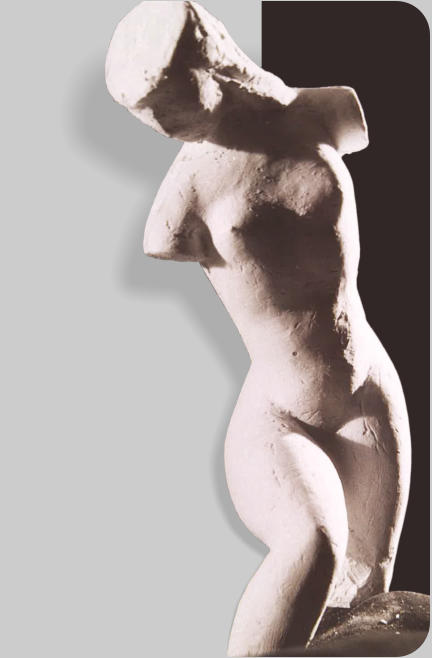
Research - 1960
Plaster, h cm 40
